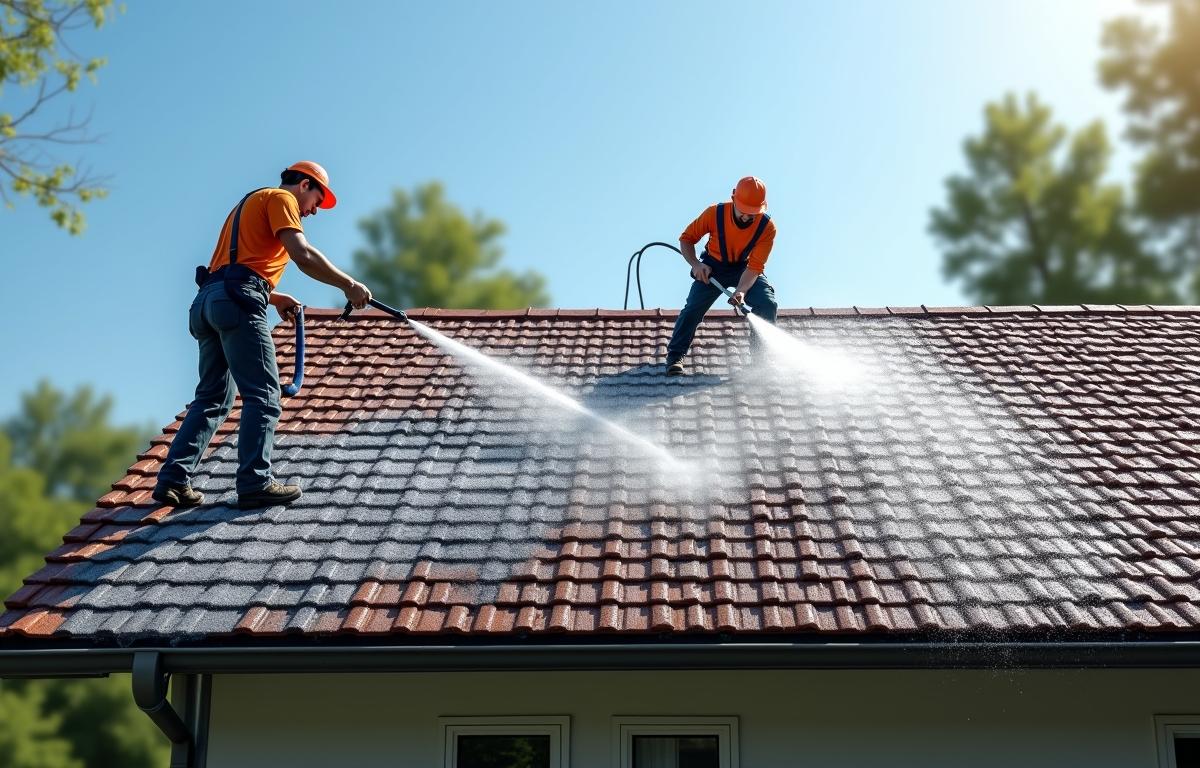Not every roof should be cleaned the same way. Different materials, structures, and ages mean every roof has individual qualities, so the cleaning method must match the roof’s characteristics. This isn’t just important for efficacy; washing your roof using the wrong technique can cause more damage than good. Here are four of the most common ways to clean a roof, and when each is applicable.
Soft Washing
Most residential homes have shingles or tiles, in which case roof soft washing tends to be the best option. This method is the safest and most effective, using low-pressure water and cleaning solutions to remove grime, stains, algae, mould, and mildew.
It’s more gentle than pressure washing, which could damage surfaces like asphalt shingles or clay tiles. It also produces more long-lasting results than a simple rinse, as the cleaning products tackle the source of the stains. If your roof needs soft washing, call in experts who can handle the job safely. Getting the right balance of chemicals, water pressure, and washing technique is best left to professionals.
Pressure Washing
Many people think pressure washing may be the best option for roof washing: it’s fast, it’s powerful, and it’s incredibly effective at blasting away old dirt. However, the high-pressure stream of water can strip away a lot more than unwanted grime.
It can remove paint, knock off protective granules or coatings, or even tear up your roofing material entirely. This is especially a risk for older homes. However, on hard roofs, there’s less risk of damage. On metal or wood, for instance, it’s very effective.
Manual Cleaning
Hard-to-reach areas or small, stubborn spots can benefit from a bit of extra attention. This method involves getting up there and scrubbing by hand, so it’s labor-intensive and time-consuming. Too much scrubbing in one place can also wear down the surface, and then there’s the safety aspect, too. If manual cleaning is your only option, it’s best left to professionals who know what they’re doing.
Chemical Treatments
Chemical treatments are designed to be sprayed onto your roof and left to work their magic over time. They’re often used in conjunction with soft washing to kill moss, algae, and lichen and prevent regrowth.
While it may be tempting to go for toxic, fast-working chemicals, remember: whatever’s sprayed on your roof will enter the local ecosystem. To keep you, your family, your animals at home, and wildlife safe, stick to eco-friendly and pet-safe formulas. The results may be more gradual, but health comes first, and Mother Nature will thank you, too.
Endnote
The smartest way to clean your roof depends on the type of roofing your home has, while also taking into account its age, condition, and the kind of dirt you’re dealing with.
Soft washing is typically the best for residential homes, and combining it with chemical treatments can produce highly effective and long-term results. Ultimately, it’s always best to consult with an experienced roof cleaning company that can recommend exactly what’s right for your property.
